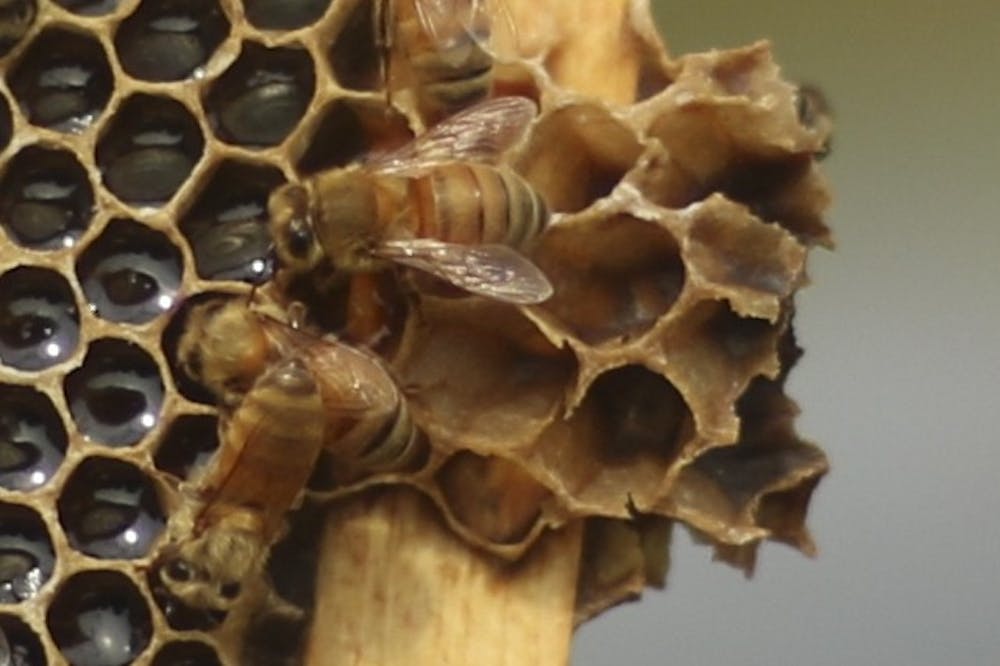More and more bee sightings have been reported in and around UNC's campus— especially in the Pit, where bees can be found scouting for sugary foods.
The exact source of these bees is still unknown, but Jeffrey R. Lee, a commercial beekeeper in Mebane, N.C., speculated that honeybees may be escaping from local “hobby hives,” which are personal bee hives owned by people near campus.
“There are a large number of hobby beekeepers right now,” Lee said. “They typically have one to two hives and it’s very possible that there could be many beekeeper hives around campus, and honeybees could be possibly escaping from there. This time of year there is not enough flowers for the bees to work. So basically these bees are looking for food.”
Lee said seasonal changes also might be the cause of the apparent bee population increase on UNC’s campus.
Dr. Forrest Greenslade, a biologist and nature-inspired artist, has another theory for where the bees are coming from.
Greenslade said the bees could be migrating from many different areas all over North Carolina. A variety of factors, including pesticides and predator insect species, could be preventing them from finding food where they normally do.
He said he is a big proponent for the conservation of honeybees everywhere and, with the help of ten undergraduate students at UNC, has begun building sculptures that double as art and native bee nesting units.
Greenslade’s project is a product of the BeAMaker Maker-in-Residence program which seeks to connect skilled “makers” or those who build things with undergraduate students to create innovative projects.
"The idea is that people could have sculptures in their gardens that could foster bee propagation and enhance pollination, and enhancing pollination will increase food production in food gardens and increase flower production in flower gardens,” Greenslade said.




